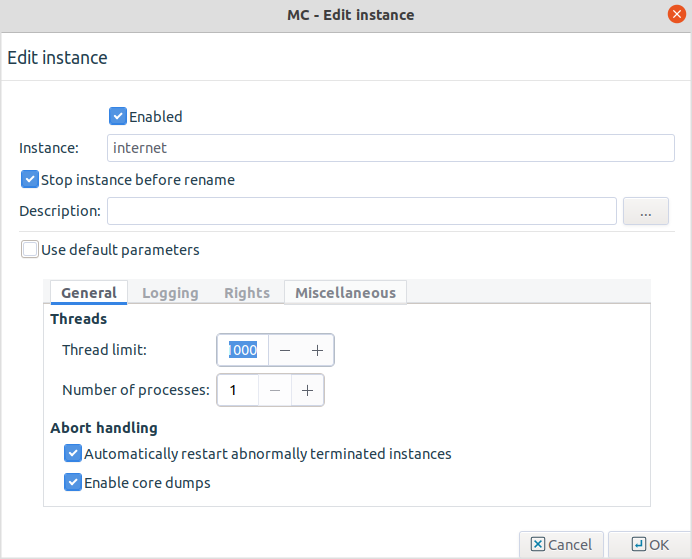To modify instance parameters, select .
The following generic settings can be configured for those instance parameters that are Active/Enabled, consequently are visible in dark colour. Inactive/Disabled instance parameters are listed in light grey:
: It is the name of the instance.
: When renaming an instance and this option is enabled, Application-level Gateway stops the instance, renames it, then starts the renamed instance.
: The user can provide a description of the instance here.
The tab has the following parameters:
: It is the number of threads the instance can start. Set according to the anticipated number of concurrent connections. Most of the active client requests require their own thread. If the is too low, the clients will experience delays and refused connection attempts.
: It reflects the number of Application-level Gateway processes the instance can start. This setting determines the number of CPU cores that the instance can use. If our PNS host has many CPUs, increase this value for instances that have high traffic. Note that the
Thread limitand theThread stack limitparameters are applied separately for each process. For details on increasing the number of running processes, see Procedure 6.3.9, Increasing the number of running processes.For every process, Application-level Gateway uses a certain amount of memory from the stack. At most, a process uses the default value of the stack size of the host (which is currently 8 MB for Ubuntu 24.04 LTS). Application-level Gateway uses this memory only when it is actually needed by the thread, it is not allocated in advance.
: If enabled, Application-level Gateway automatically restarts instances that crash for some reasons.
: If enabled, PNS automatically creates core dumps when a Application-level Gateway instance crashes for some reasons. Core dumps are special log files and are needed for troubleshooting.
For more details on core dumps see Section 10.11, Managing core dump files.
Copyright: © 2021 Balasys IT Security
Send your comments to support@balasys.hu



